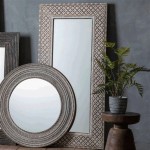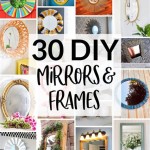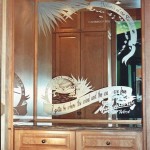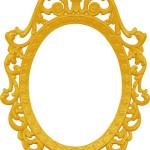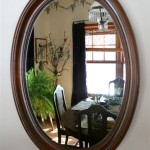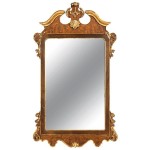How to Hang a 30kg Mirror on a Plasterboard Wall
Hanging a heavy mirror, especially one weighing 30kg, on a plasterboard wall requires careful planning and execution. Improper installation can result in the mirror falling, causing damage and potential injury. This guide outlines the necessary steps to safely and securely hang a 30kg mirror on a plasterboard wall.
1. Assessing the Wall and Mirror
Before beginning, assess the plasterboard wall's condition. Check for any existing damage or weaknesses. Identify the type of plasterboard; thicker boards generally offer more support. Measure the mirror's dimensions and weight to ensure accurate anchor selection. Note the location of wall studs, as they provide the most secure anchoring points.
2. Choosing the Right Fixing Method
Several fixing methods are suitable for heavy mirrors on plasterboard. Traditional picture hooks are insufficient for this weight. Consider using heavy-duty toggle bolts, hollow wall anchors, or specifically designed mirror fixings. The choice depends on the wall's construction and the mirror's hanging mechanism.
Toggle Bolts: These anchors are ideal for heavier items. They require drilling a larger hole and inserting the toggle through the wall, which then expands to provide a secure grip behind the plasterboard. Ensure the chosen toggle bolt is weight-rated for at least 30kg, ideally more for added safety.
Hollow Wall Anchors: These anchors expand within the wall cavity when a screw is inserted, creating a strong fixing point. Various types of hollow wall anchors are available, including molly bolts and self-drilling anchors. Select an anchor specifically designed for heavy objects and plasterboard.
Heavy-Duty Mirror Fixings: Specialty mirror fixings are often designed with a combination of features for added security and stability. These might incorporate elements of both toggle bolts and wall anchors, along with additional plates for distributing weight. Carefully review the manufacturer's specifications to ensure they are suitable for the mirror's weight and the wall type.
3. Gathering the Necessary Tools and Materials
Assemble all necessary tools and materials before starting the installation process. This includes a stud finder, drill with appropriate drill bits (sized for the chosen anchor), screwdriver, measuring tape, pencil, level, safety glasses, and the chosen anchors. Having everything readily available streamlines the process.
4. Locating and Marking the Fixing Points
Accurate placement of the fixing points is crucial for secure hanging. Use a stud finder to locate wall studs. If studs align with desired fixing points, this offers the strongest support. If not, the chosen anchors must be robust enough to support the mirror's weight without stud support.
Mark the desired fixing points on the wall with a pencil. Use a level to ensure these points are perfectly horizontal. Double-check measurements to ensure accurate placement and avoid having to reposition the anchors later.
5. Installing the Anchors
Following the manufacturer's instructions for the chosen anchor type, carefully drill the necessary pilot holes. Insert the anchors into the holes and ensure they are flush with the wall surface. If using toggle bolts, ensure the toggle is fully expanded behind the wall. For other anchor types, ensure they are correctly installed and securely affixed within the wall cavity.
6. Hanging the Mirror
With the anchors securely in place, carefully lift the mirror and align its hanging mechanism with the installed anchors. Depending on the mirror's design, this may involve hooks, D-rings, or wire. Slowly lower the mirror onto the anchors, ensuring it is seated correctly.
7. Testing the Installation
Once the mirror is hung, gently tug on it to test the stability of the installation. Visually inspect the anchors to ensure they remain flush with the wall and are not pulling out. If there is any movement or sign of instability, remove the mirror and reassess the anchor choice and installation process. A heavier-duty anchor or alternative fixing method may be necessary.
Consider adding additional support mechanisms, such as adhesive mirror mounting tape, for extra security, particularly for larger or heavier mirrors. This tape can help distribute the weight and provide added bonding to the wall. However, ensure the chosen tape is compatible with both the mirror and wall surface and that it is rated for the appropriate weight.

How To Hang A Heavy Picture On Plasterboard Wall

How To Hang A Mirror On Plasterboard Wall Soraya Interiors

Hanging Heavy Mirror On Plaster Walls 6 Steps With Pictures Instructables

Hang A Mirror On Plasterboard Wall Soraya Interiors

How To Hang A Heavy Picture On Plasterboard Wall

Heavy Duty Picture Mirror Hanging Kit Hard Wall Plasterboard Wood Hooks Hangers

How To Hang A Mirror On Plasterboard Wall Soraya Interiors
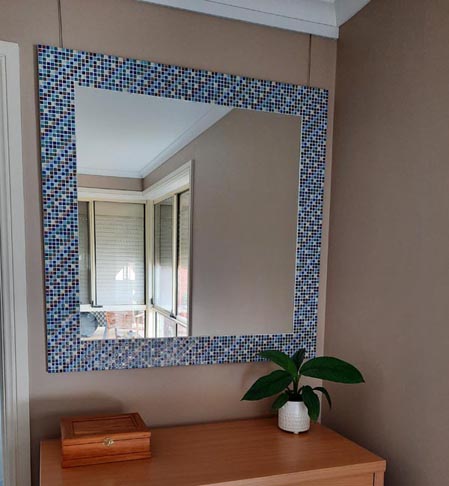
How To Hang A Very Heavy Picture Or Mirror The Best

Bullfix Mirror Picture Fixing Kit Any Plasterboard 12 5 16mm Inc Stud Dot Dab And Insulated Holds Up To 50kg Diy At B Q

How To Hang A Heavy Mirror


